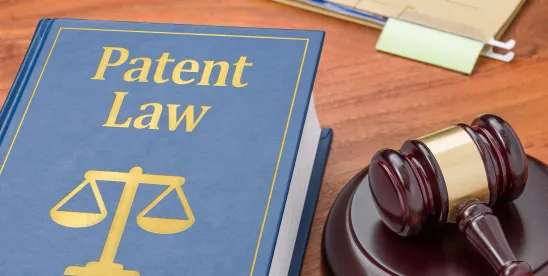Addressing for the first time whether a functional limitation must carry the same meaning in all claims, the US Court of Appeals for the Federal Circuit determined that it need not, vacating a district court decision to the contrary. Vascular Sol. LLC v. Medtronic, Inc., Case No. 2024-1398 (Fed. Cir. Sept. 16, 2024) (Moore, Prost, JJ.; Mazzant, Dist. J., by designation).
The seven patents asserted by Teleflex syin this case all come from a common application and are directed to a “coaxial guide catheter that is deliverable through standard guide catheters by utilizing a guidewire rail segment to permit delivery without blocking use of the guide catheter.” The asserted patents all share a common specification. However, the asserted claims differ in how they refer to the “side opening.” Some claims include the side opening as part of the “substantially rigid portion/segment” while other claims recite that the side opening is separate and distal to the “substantially rigid portion/segment.”
This case has a long procedural history involving an initial preliminary injunction motion and multiple inter partes reviews (IPRs). At the second preliminary injunction stage, Medtronic and the district court grouped the asserted limitations into two mutually exclusive groups:
- Group One, which included the “substantially rigid portion/segment” claim limitation.
- Group Two, which “required that the side opening not be in the substantially rigid portion” (emphasis supplied).
In denying Medtronic’s preliminary injunction motion, the district court questioned “how a skilled artisan could possibly be expected to understand the scope of a patent when the same device could simultaneously infringe two mutually exclusive claims within that patent.”
The district court then proceeded to claim construction. It rejected both parties’ initial constructions and appointed an independent expert – former US Patent & Trademark Office Director Andrei Iancu – to propose a construction. Teleflex argued that Iancu should adopt a split construction (i.e., one construction for the Group One limitations and another construction for the Group Two limitations). Medtronic argued that the claims were indefinite. Iancu rejected both proposed constructions but agreed with the district court on the mutual exclusivity of the two groups. The district court determined that all claims that included the “substantially rigid portion/segment” were indefinite, and since all the asserted claims included that term, the parties stipulated to final judgment. Teleflex appealed.
Teleflex argued that the district court erred in determining that the boundary of the substantially rigid portion must be the same for all claims. Medtronic argued that the claims were indefinite.
The Federal Circuit concluded that the district court erred when it determined that the Group One and Group Two limitations were mutually exclusive and indefinite. The Federal Circuit cautioned that affirming the district court’s conclusion would mean that claims in a patent cannot vary in how they claim the disclosed subject matter and that independent claims must be entirely consistent with other independent claims, neither of which is a restriction in how patentees may claim subject matter. The Federal Circuit explained that at the claim construction stage of a proceeding, a court’s task is to construe claims on a claim-by-claim basis, understanding that “the claims are not necessarily mutually exclusive since each independent claim is a different ordered combination of limitations.”
Next, the Federal Circuit held that the limitations are not required to have a consistent meaning across all claims. The Court emphasized that where a limitation is functional, the construction may likewise be functional. Here, the “substantially rigid portion” recitation “does not specify the boundary of the substantially rigid portion,” according to the Court. A skilled artisan would not be confused about how to measure the boundary of the substantially rigid portion because the claims themselves dictate how to conduct the measurements on a claim-by-claim basis.
The Federal Circuit also cautioned that arguments regarding how the accused products would infringe various claims were premature at this stage. Thus, the Court vacated the district court’s judgment and remanded it for the district court to reconstrue the claims.




 />i
/>i

